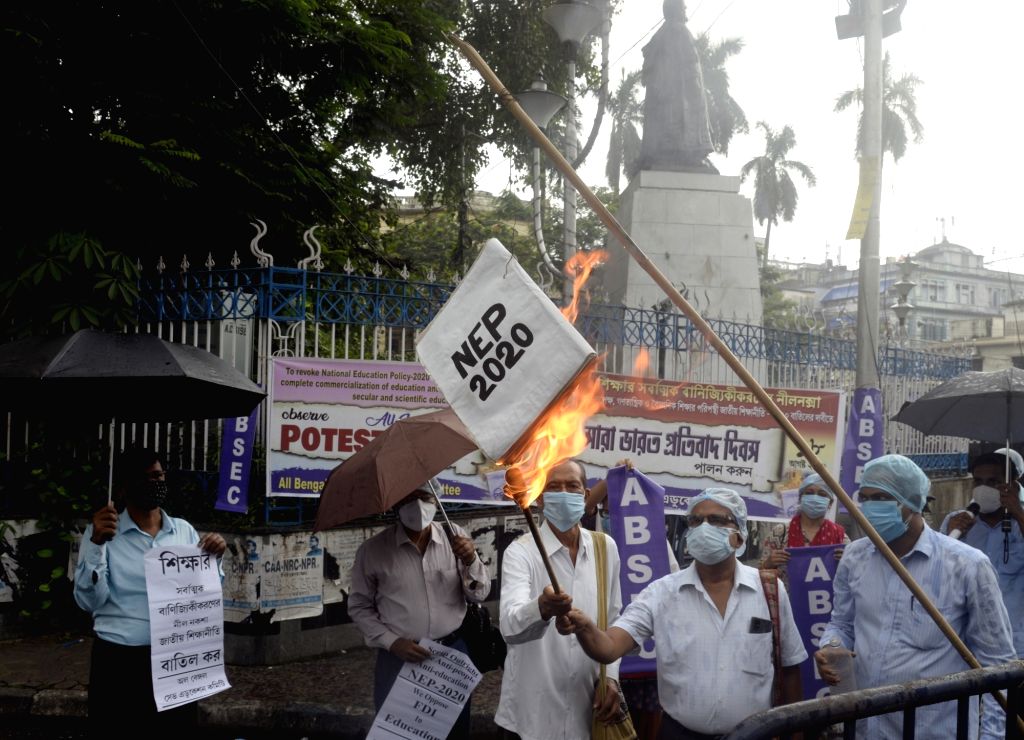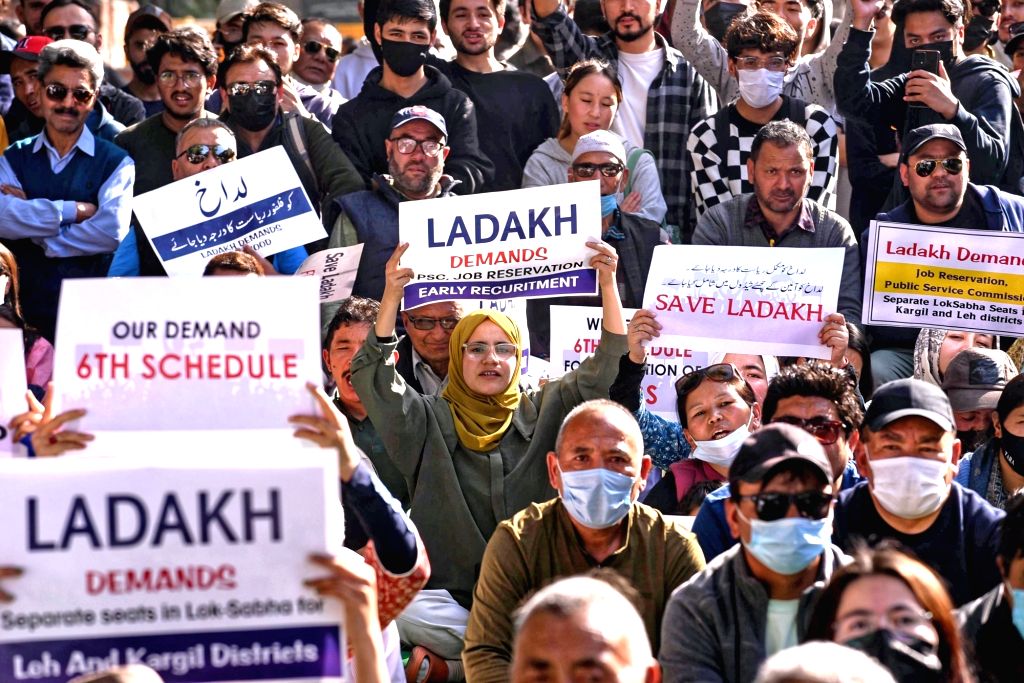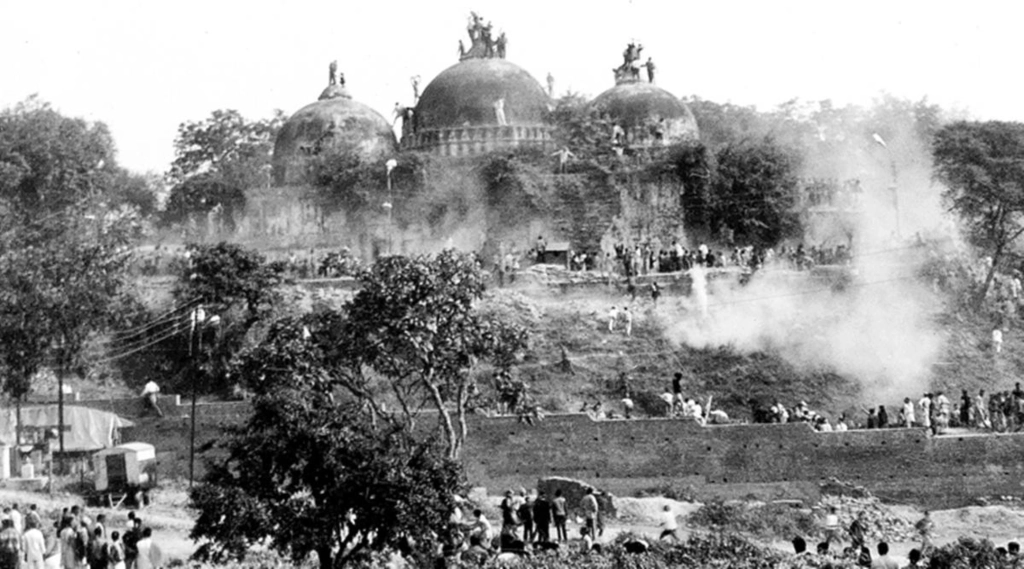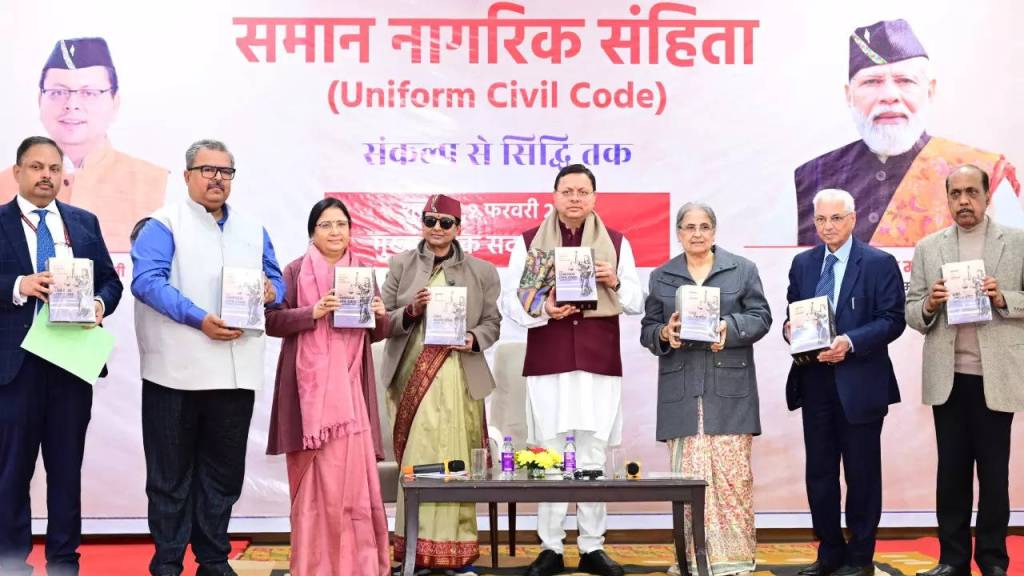Geography and space are not merely about physical features. It is not just the things that we can feel, see or touch; it also occupies a space in human relations. The dialectic of ecological colonialism is intricate, weaving the death and destitution of both the people and environment with the imperial project of valorisation of capital; justified in the name of development. The ecological rift which is so created may be described as capitalism’s war on the earth. In India, there is no place like Joshimath in Chamoli district, nestled in the young Himalayas, which highlights how the battlefield looks.
“Joshimath is sinking!” is the echo of the cries of its people, of national headlines as people gaze upon the wrath of the elements, but the question is why? There is no doubt that Joshimath lies in an ecologically sensitive zone. The Himalayas are only 50 million years old and still fragile; the mountain range made of the rocks of Tjethys is still rising slowly. Located in seismic zone 5, the region is prone to earthquakes, landslides, and other natural disasters. However, Joshimath is a state-made disaster- its environmental impact exaggerated due to state (corporate+ bureaucracy+ local landlords) intervention. If not the environment, whose fault is it that Joshimath is deemed unsalvageable by some, whose fault is it that the rate of environmental damage is punishing, is it irreversible? Though the government claims that it is neither their fault nor of NTPC (formerly the National Thermal Power Corporation), the reality on ground paints a different picture.

Development or Disaster?
Joshimath is sinking due to governmental neglect of its ecological restraints, due to the Tapovan-Vishnugad hydro project, due to the Char Dham road construction, due to imperialism (excessive loot of people’s resources). In the relation between geography and development, the expansionist nature of capital is a driving force. A clear example of the same is the climate report released by Intergovernmental Panel on Climate Change (IPCC) on March 20 which argues that the solution to environmental damage is green energy- minimization and reduction, in which finance, technology and international cooperation are also “critical enablers for accelerated climate action”. Therefore, their solution is more imperialist development, which would lead to more construction and even more damage to the environment. The valorisation of capital leads to imperialists extracting valuable minerals and biological resources from semi-colonies like India. Uttarakhand’s government aspires to be Urja Pradesh (energy surplus state) due to which there has been an incremental increase in dam construction. Tapovan-Vishnugad dam and the widening of Char Dham road are two such projects enabled by the government and supported by imperialist organisations like the World Bank. Governments will paint a picture of development for the people, saying that constructions like these are for the welfare of Joshimath- that it will generate both employment and development. While setting aside funds for “sustainable” development in the Union Budget, the Union FM put it in the following words: “green growth efforts help in reducing carbon intensity of the economy and provide for large-scale green job opportunities.”
The Story on Ground
Joshimath’s story is as old as 50 years old- the time when cracks first appeared in the houses of Joshimath. The residents live in a perpetual state of fear, afraid that their houses will collapse on top of them. As far as 1976, the Mishra Committee Report had warned that construction in the area needs to be curbed for the ecology to recover. Paying no heed to such reports, the work on the Tapovan Vishnugad Hydro Power Plant started in November 2006. Since then, the cost of the project has arisen by 153%. Built on Dhauliganga river, the initial cost was INR 2,811 crore and is INR 7,103 crore now.
The destruction caused is self-evident- the 2021 floods in Chamoli killed 200 people including the workers of the hydropower project. In November 2022, the crisis intensified when the government invested 16 lakhs crore through the PwD for the purpose of building new roads. The construction of the Char Dham highway project has led to the cutting of the mountains while the tunnel running underneath Joshimath for the hydropower project has destroyed the fragile mountain.

Development in the Name of People is not Development for the People
Monitored by the World Bank, demands for roads and railways are stemming out of the insidious need to transport labour force and produce to the markets, while dams are projects to enable the concentration of water and electricity for landlords. Such is clear from the cries of the people, who are asking where the benefits of the project (Singh, 2021). The leaders of the women’s andolan near Joshimath have stated clearly that their fight is simple- it is the fight for their jal and zameen. Their fight is also for their children- the fight in Joshimath is not solely about the environment, it is the fight for the right to live.
The livelihood of these locals depends on farming, their futures dependent on their children studying to make a better life for themselves. However, the tunnel running under Joshimath is endangering these prospects- the gases which are released in construction and blasting are changing the ecology and therefore ruining their crops. The women are complaining that the noise is distracting their children while the land acquired for these projects is threatening to demolish their schools.
Such exploitation is enabled by the land mafia unleashed by the nexus between landlords and state who are not only threatening the women to withdraw their legal representation but also stalking their children, and known acquaintances, in order to intimidate them. In a video which surfaced on Facebook, a woman is seen arguing with the police, “If the work they are doing is legal, why are they doing it under the cover of the night?”
In any project as big as this, the government is obliged to get both an environmental and a forest clearance. As far as clearance for forests are concerned, the Forest Conservation Act of 1980 was amended through Forest Conservation Rules 2022 through which a specially constituted Forest Advisory Committee (FAC) would have the task of approving projects. Therefore, the autonomy of the adivasis is eroded in this process. Singh (2023) argues that the Brahmanical consciousness of the bureaucrats, hailing from plains is also an impediment to the same. Moreover, the nexus between the landlords and state impedes their rights even further- often, landlords are the local contractors which the state hires and therefore they squeeze out public funds in the name of development, aided by panchayat officials.

Imperialism Drives Construction
The Indian Forest Act gave monopoly over forest resources due to which constructions of roads became necessary to maintain control and authority over other resources. Therefore, it is necessary to realise that neither the Tapovan-Vishnugad Hydro Project nor the widening of Char Dham road are isolated incidents- roads are necessary to for transporting produce and labour itself, to and from the hills to the Northern plains, where the capitalist not only has their industry but is able to sell the product at a higher cost. However, the locals are still necessary as they go on to form the reserve pool of labour-power.
In a documentary by Baramasa, it was revealed how the government comes in with the promise of employment generation. However, PARIVESH data reveals that the construction of roads is expected to only generate temporary employment for 4930 persons (up to 2014). This is true for a constituency in which the labour force constitutes 7,368 people. However, even this is far from the truth- in the project, only 2 locals have been hired while the rest of the labourers hail from the plains.
Displacement of People
The mass displacement of Joshimath’s native population is the result of uneven development aimed at “promoting growth” and building world class infrastructure. The short-term solution to the same is relocation of the families but this may prove to be a cultural shock which deprives people from their sense of belonging. “This land is ours; it is our home- where will we go?” such is the answer when reporters on-ground questioned the residents of Joshimath on why they are risking their lives by continuing to stay in cracked houses on the verge of collapse. The truth is that the residents of Joshimath are connected to their land, and are fighting for it, not to be alienated from it. Though without a recourse, Joshimath is willing to die with its land. With the effect that the construction of Tapovan-Vishnugad hydro project and the widening of Char Dham road is culminating into, the prospect is real.
Land Alienation, Migration and Displacement
Land alienation is often the effect of imperial development, and this is a state sponsored exercise to allow the growth of imperial capital. The Forest Conservation Rules 2022 is a tool in the reservoir of the state to enable such plunder, legally, initially meant to protect forest areas, laws such as these are a means to dislodge the Adivasi from their land, to alienate them from their culture, to rip them from their roots so the seeds of valorisation of capital may grow. For the sake of development, forests are cut and with it, the people’s culture. Dams are damning the way of the people. A 2020 study has identified 1,249 large dams are already in place within existing protected areas while 509, or 14% of the total dams under construction/planned to be built in the next 2 decades, are in protected areas. This means that the evoking of forest conservation is a lie; at the orders of the imperialist masters, Indian people’s land is taken, their resources depleted, and their culture overlooked.
Not only is Joshimath a resource rich place, Joshimath has a “dharmic, sanskrit and historical” cultural relevance. As a result, tourism in Joshimath is rampant, with Char Dham road being the favoured route to Badrinath pilgrimage. However, the influx of tourists has a jarring effect. Tourists from the plain are alienated persons who bring in a culture of mass consumerism, vastly different from the local culture. The local culture itself is displaced in order to cater to tourists who become primary sources of revenue.
The negative impact of the influx of tourists is not limited to culture alone- for example, there has been an increased number of multi-storey buildings due to tourism. An August 2022 report by the USDMA noted many improperly planned structures without due regard to carrying capacity. These have aggravated issues related to slope instability. Additionally, since Joshimath does not have a wastewater disposal system, increased on-surface productive activities have blocked natural water drainage systems, forcing water to find new drainage routes, thereby reducing the shear strength of the overburdened soil. This unbridled tourism in such an ecologically sensitive area has become a problem for the local ecosystem, which is being distorted by ongoing economic activities in the region. For the purpose of taking control and ownership over ecosystems, the state is expropriating land for infra development like power projects, transmission lines, roads etc. Doing this is nothing but the financialization of nature which alienates the ecosystem from the population.
Influx of tourism has also led to increased urbanisation of the area, yet this has not led to creation of employment in the region. In fact, displacement and migration are interrelated and have led to devastating effects on the lives of people. Displacement of people can be explained through how land cannot be compensated in money, how monetary compensation is not enough, and the negative impact displacement has on women. Land is the source of livelihood in areas where dams encroach but no permanent employment is generated to compensate for it, thereby leaving men no choice but to migrate to urban areas in search of employment. For the people of Joshimath who rely on forests, the displacement to concrete jungles is jarring – their land was their culture and their lives, but now they are aliens unto the land and the land to them. Furthermore, children are often forced to drop out of school to provide a supplementary income for the continued survival of the family.
At the same time, rehabilitation and monetary compensation is never enough. Corrupt government officials neglect the needs of the villagers, leaving them to scrounge for space in abandoned buildings while the amount they receive is calculated on an arbitrary basis, thinned further in the exchange of hands and bribes. In the villages they are resettled into, these homeless people are labelled “encroachers,” left to live on the fringes of the villages and denied access to resources. Therefore, whether a landlord or the landless, in the resettled villages, all are equally impoverished.

Women’s Role in the Movement
The role of imperialism in the lives of women affected by environmental damage cannot be neglected. Due to displacement and a crumbling economy being the cost of development, the men in the family often leave to seek employment, keeping them away from their houses. Due to this, environmental degradation impacts the women in the community disproportionately. Once the man leaves seeking a job, the woman is the sole caretaker of the household- not only is she to take care of her children but sustain the whole household as well as tend to land and cultivation (provided she is left with any scrap of land). The alienation due to both displacement from their forests as well as the reducing forest coverage has made the lives of Adivasi women very difficult. Having left to do all domestic chores on her own, migration makes her husband an alcoholic if they shift to urban areas.
If they remain on their land, firewood is not only a source to light their stoves, but the source of their livelihood. Though yielding a paltry sum, the wages earned from a day’s labour of cutting, travelling and selling wood is the only income women use to feed herself and her family. Therefore, when women are disconnected from their land, it is not merely a loss of their culture and religion, it becomes a question of their survival. The invasion of dams is a threat to their very existence.
Since the question of imperialism therefore impedes on the very survival of women and their community, history has shown that women have played an important role in the leadership of movements against imperialism and environmental degradation. The Chipko Movement and the Narmada Bachao Andolan are famous examples of the same in India.
Conclusion
The Indian state actively supports the encroachment of imperialist capital for the plunder of resources in India, on the lands of marginalised communities. It displaces its people, invades the local economy, and destroys the environment. The fight in Joshimath is not Joshimath’s struggle alone, it is the fight for India’s people- the fight of the working class, of women, of Dalits, of Adivasi. The struggle in Uttarakhand is not divorced from the protracted struggle of Niyamgiri hills against the violent landgrab of Adivasi land by comprador bourgeoisie Vedanta. It is in the same vein as the struggle in Silger where the locals waged a struggle against the carpet militarization through fortified camps in their area. In Silger, post militarization, CRPF killed local youth which sparked the protests. The Silger struggle is not just a reaction to the militarization but it is predicated against the subsequent corporatization through landgrap occuring all over India’s resource-rich areas under the garb of Operationn SAMADHAN-Prahar. Imperialism systematically uses state military to wipe away the local population and their resistances to the loot of their lands and resources. The struggle in Joshimath, therefore, must become part of the class struggle active all over India against imperialism. Joshimath is the fight of the people by the people, for the people and we must unite to destroy imperialism, to move towards a new democratic society!
by Yash, student of chemistry in Hansraj College, Delhi University
and Val Varshri, student of law, Jindal Global Law School
Download PDF of this article here.
References:
- Singh, Uttam “Himachal: Water, Forest, Land” Unknown (2021)
- Down to Earth, “Planned Disaster: Himalaya Special” Down to Earth (February 2023)
- https://thewire.in/environment/new-ipcc-report-lists-numerous-low-cost-options-to-tackle-climate-change
- https://www.youtube.com/watch?v=vZltRAgKlVw
- https://youtu.be/6BYUWD22Tfg
- Ground Report | क्यों खतरे में है ऐतिहासिक शहर जोशीमठ? – YouTube
- Thakkar, Himanshu “Tapovan Vishnugad: NTPC project at the heart of Joshimath crisis” Front Line (26th Jan 2023) https://frontline.thehindu.com/environment/tapovan-vishnugad-hydropower-plant-ntpc-project-at-the-heart-of-joshimath-crisis/article66386447.ece
- https://www.google.com/url?q=https://documents1.worldbank.org/curated/pt/886151468267023786/pdf/E431100UDRP0ES0BOx0379847B00PUBLIC0.pdf&sa=D&source=docs&ust=1682439260701966&usg=AOvVaw3CUtv9qCyCHRm-G0uyFqQa
- https://news.mongabay.com/2020/08/more-than-500-dams-planned-inside-protected-areas-study/
- https://conbio.onlinelibrary.wiley.com/doi/full/10.1111/conl.12719







Leave a comment